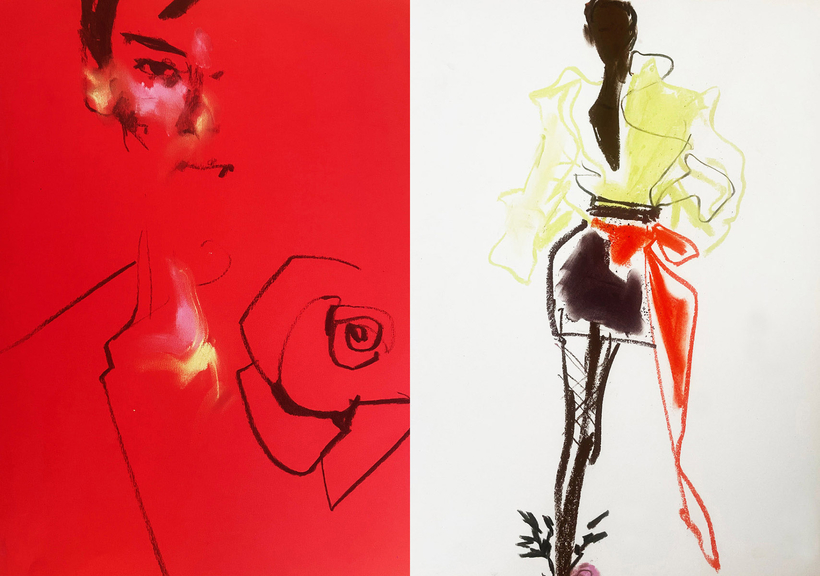On July 6, two days before the Valentino fall-winter ’22 haute couture show commandeered the Spanish Steps in Rome, the temperature in the city soared to nearly 100 degrees. Its wilting inhabitants collectively nudged the dial on their air conditioners, causing power outages.
The following night, a rainstorm cleared the air and lightened the mood, but threatened to make the 136 travertine-marble steps, worn smooth by the centuries, a hazard for the 100 or so models engaged for the event. (Valentino creative director Pierpaolo Piccioli, in a gesture contravening every known fashion law, gave them the option of wearing flats or heels.)
The show was timed for sunset so that the church of Trinità dei Monti, standing sentinel at the top of the steps, would be bathed in an amber glow. Rome, the most theatrical of cities, was ready to celebrate.
Barricades had been erected across the Via Condotti and the neighboring streets. A catwalk linked the Piazza di Spagna, at the foot of the steps, to the adjacent Piazza Mignanelli, home to the Valentino headquarters since 1988. A giant screen was erected to broadcast the event to the milling crowds. The occupants of nearby buildings, some dressed for cocktails, gathered at windows with their camera phones. Only the Dior flagship store, opposite, remained dark.
Anne Hathaway arrived to riotous cheers. There would be no time, she said, to pose for individual pictures, but she would stand and wave, she said, “so you have something.” It was enough.

The show, billed as “The Beginning,” brought Valentino couture back to Rome (from Paris) for the first time in more than a decade. And the Eternal City is indeed where it all began. In 1960, Valentino Garavani, a fledgling designer, met Giancarlo Giammetti, a trainee architect, at a café on the Via Veneto. (Which café remains a moot point; the couple were still arguing over it in Matt Tyrnauer’s masterly 2008 documentary, Valentino: The Last Emperor.) They formed an unbreakable personal and professional bond, and before the decade was out, Valentino was the go-to designer for society swans (Jackie Kennedy! Lee Radziwill!) and arc-light goddesses (Liz Taylor! Audrey Hepburn! Sophia Loren!). The jet-set style he championed defined and elevated the brand; life and work became one.
Valentino stepped down in 2008. Alessandra Facchinetti took over briefly—a misstep—before onetime accessory designers Maria Grazia Chiuri and Pierpaolo Piccioli were appointed as joint creative directors. When Chiuri left for Dior, in 2016, Piccioli took sole command.
Since then, his mission to modernize without compromising on glamour has won him plaudits from critics and a devoted clientele. At one show, I sat next to Céline Dion, who sobbed softly as the show built to a crescendo.
The 750-person audience in Rome was treated to an extravaganza. A drone hovered, Labrinth sang, and breezes shivered feathers and billowed capes. It was a collection as light as air and as dramatic as grand opera.
Thanks to inclusive casting, the models represented many ages, ethnicities, genders, and body shapes, and after sending out an all-pink ready-to-wear collection in March (much in evidence on the front row), Piccioli indulged his painter’s eye—chartreuse and purple, yellow, hot orange, lilac, mint green, and the signature house scarlet. The finale, with all 100 looks on the steps, presented a ravishing bouquet to the city.
Piccioli took his bow flanked by his atelier staff in their crisp, white lab coats, a rock star at his ease (the Next Emperor?), and Rome once again inhaled the sweet life.
David Downton is an Editor at Large for AIR MAIL

